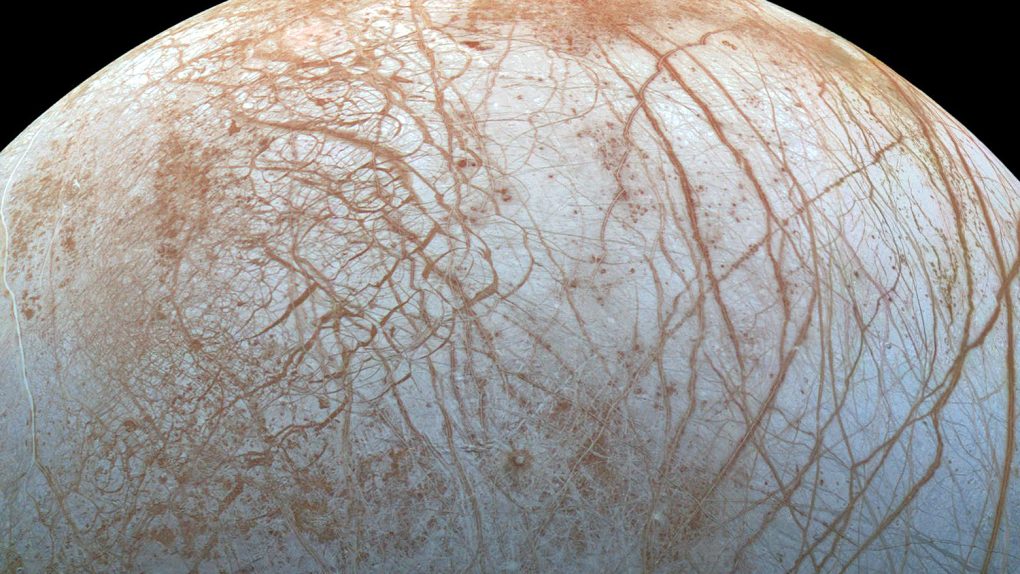As telescope technology and other observational tools has improved over the decades we’ve learned more and more about the planets and moons in our Solar System. We’ve begun to check off the places that could have possibly harbored life, but a handful of promising destinations still remain. Jupiter’s moon Europa is one of the most tantalizing.
The ice-covered world hides a vast ocean beneath its surface, and cracks in its thick ice sheets regularly spew water out into space, teasing us with the possibility that something lives far below. Actually traveling to Europa is still little more than a dream, but when we eventually make it happen we may need to grapple with something unexpected: a surface covered in brutal blades of ice.
\
In a new study published in Nature Geoscience, researchers studying Europa reveal that conditions on the planet might support a phenomenon that occurs on Earth which turns ice into large spiky blades.
“On Earth, the sublimation of massive ice deposits at equatorial latitudes under cold and dry conditions in the absence of any liquid melt leads to the formation of spiked and bladed textures eroded into the surface of the ice,” the study explains. The researchers go on to explain that the same conditions exist on the surface of Europa, and that the icy blades “could pose a hazard to a future lander on Europa.”
You might not think it when you peer out at an ice-covered lake in the dead of winter, but perfectly flat, smooth ice is actually somewhat rare. When ice is exposed to the elements for long periods of time — specifically when it’s bathed in sunlight but ambient temperature remains well below freezing — it tends to form valleys and peaks which become more pointed and “sharp” over time.
We haven’t seen images of Europa that were detailed enough to determine the details of the texture on its surface. We know it’s frozen ice, but not what condition the outermost surface is in, and if the researchers are right and there’s sharp blades and spikes of rock-hard ice, sending a lander down could be an incredibly tricky task.
Sometime in the early 2020s NASA is planning on launching an orbiter to Europa called the Europa Clipper. It will come packed with nice instruments for observing the moon, including radar that will map the ice and determine how thick it is. It should also give scientists a much better idea of what the surface looks like, and if it sees a bed of icy spikes, NASA will have to figure out how to deal with them for future missions.








